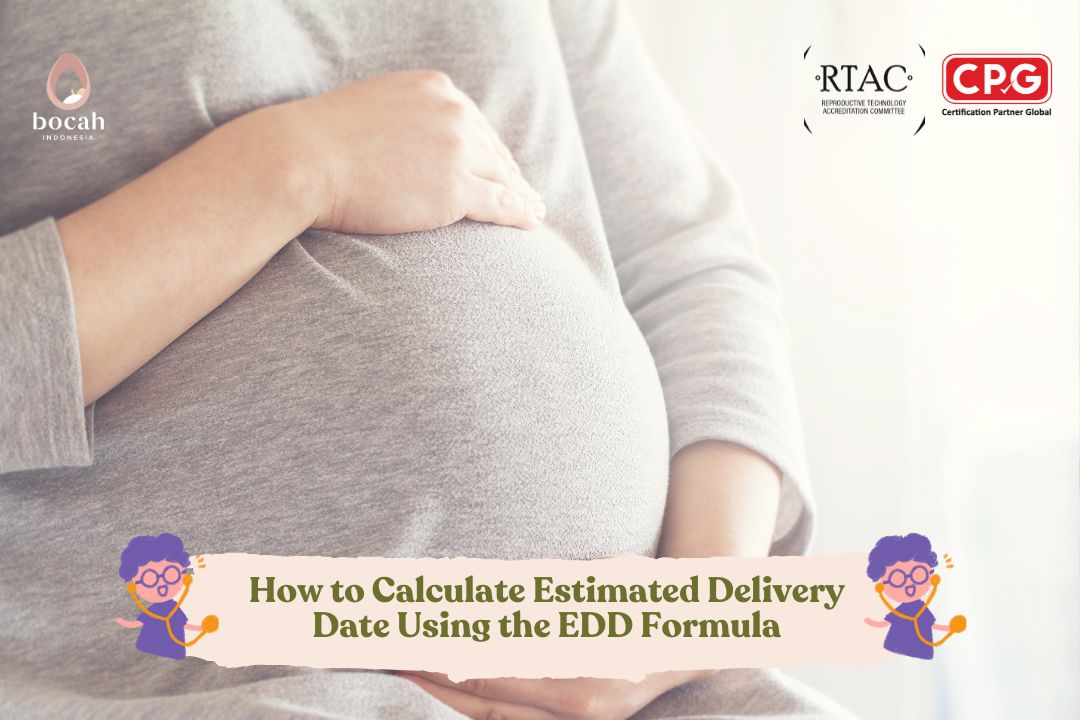How to Calculate Estimated Delivery Date Using the EDD Formula

The estimated due date (EDD), or Hari Perkiraan Lahir (HPL) in Indonesian, helps expectant mothers know when to anticipate the birth of their baby.
Expectant mothers are likely familiar with the concept of an estimated due date (EDD). Generally, pregnancy lasts between 37 to 42 weeks, with the average being 40 weeks. This duration is calculated from the first day of the last menstrual period (LMP), also known as Hari Pertama Haid Terakhir (HPHT), not from the date of ovulation or conception.
Ovulation typically occurs about two weeks after the LMP. If conception happens during the second week after the LMP, the pregnancy is still dated from the LMP. So, when the fetus is actually 4 weeks old, the pregnancy is considered to be 6 weeks along.
What Is an Estimated Due Date (EDD/HPL)?
The estimated due date (HPL) is a calculated day when a baby is expected to be born based on the pregnancy’s gestational age. Knowing the HPL helps expectant mothers prepare both mentally and physically for childbirth.
However, not all pregnant women know how to calculate their estimated due date. In some cases, miscalculations occur, especially when pregnancy age is referred to in months rather than weeks or days.
So, how do you accurately calculate your due date using the HPL formula?
Tanya Mincah tentang Promil?
How to Calculate the Estimated Due Date (HPL)?
There are several methods for calculating the estimated due date, including:
-
Counting from the first day of the last menstrual period (LMP/HPHT)
-
Having an ultrasound scan (USG) performed by a doctor
-
Measuring the fundal height
-
Monitoring the fetal heartbeat
Calculating from the First Day of the Last Menstrual Period (HPHT)
There are two commonly used formulas for calculating HPL:
-
Naegele’s Rule: HPHT + 7 days – 3 months + 1 year
-
Parikh’s Formula: HPHT + 9 months + (length of menstrual cycle – 21 days)
If you have a regular menstrual cycle (around 28 days), you can use Naegele’s Rule.
Example:
If your LMP was February 1, 2024:
→ Add 7 days = February 8, 2024
→ Subtract 3 months = November 8, 2023
→ Add 1 year = November 8, 2024
So, your estimated due date is November 8, 2024.
If your cycle is shorter or longer than 28 days, Parikh’s Formula is more suitable.
Example:
LMP: February 8, 2024
→ Add 9 months = November 8, 2024
→ If your cycle lasts 32 days, subtract 21 = 11
→ Add 11 days = November 19, 2024
So, your estimated due date is November 19, 2024.
Getting an Ultrasound (USG) Scan from a Doctor
Another method for calculating your estimated due date is through a prenatal ultrasound scan. Ultrasound is generally more accurate than manual formulas, especially when done in early pregnancy, and is ideal for women with regular menstrual cycles.
However, this method is not recommended for pregnant women with certain health conditions such as hypertension or gestational diabetes, as these may affect the accuracy of the EDD.
Measuring Fundal Height
EDD can also be estimated by measuring fundal height — the distance from the pubic bone to the top of the uterus.
Doctors can estimate gestational age and the position of the fetus using this measurement. As pregnancy progresses, the fundal height increases, allowing doctors to track fetal development and estimate the due date.
Monitoring Fetal Heartbeat
Another approach is estimating the EDD based on when the fetal heartbeat is first detected, usually around week 9 or 10 of pregnancy. In addition, feeling the baby’s first movements (quickening) can also help estimate gestational age.
Fetal movements are typically noticeable between weeks 18 and 22, but this can vary. By tracking these developments, healthcare providers can estimate the due date manually.
That’s how you calculate your estimated due date using the HPL formula and other medical methods. For the most accurate results, it’s best to consult your doctor. Most importantly, take care of your health throughout the pregnancy to ensure a safe and healthy delivery.
Source:
- Edwards, KI., Itzhak, P. (Last update: 2024). Estimated Date of Delivery.
- Saccone, B., et al. (2015). Transvaginal ultrasound cervical length for prediction of spontaneous labour at term: a systematic review and meta-analysis. BJOG: An International Journal of Obstetrics & GynaecologyVolume 123, Issue 1 p. 16-22.





